Every car company sells crossover SUVs – so why buy Mitsubishi’s crossover SUV?
Well, let’s start with the reasons having nothing to do with the crossover itself.
First, Mitsubishi really needs your business.
The company almost flat-lined a few years ago – not because its cars were awful but because its business model was. They literally gave cars away – or might as well have – via a disastrous “zero down, zero percent and zero payments” for one whole year financing scheme. People “bought” new Mitsubishis and drove them for that first free year – and then dumped them without paying a cent for them once the year was up. This not only left Mitsubishi holding a very empty bag, it also cratered resale values of used Mitsubishis. Which made it hard to sell (and lease) new ones.
To get back in business, Mitsubishi need you to buy. And so they are eager to deal. You will probably be able to drive home in a new Outlander Sport for a lot less than rival crossovers because Mitsu dealers have more incentive to get you behind the wheel of their crossover.
Six years, 60,000 miles on the whole works and ten years, 100,000 miles on the powertrain. This is better than the standard and powertrain warranties offered by everyone else – including Hyundai.
Okay, but what about the Outlander itself?
WHAT IT IS
The Outlander Sport is Mitsubishi’s compact (two-row/five-passenger) crossover SUV.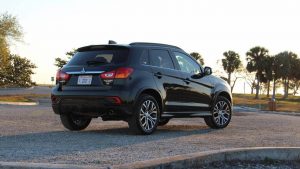
It’s about the same size as the Chevy Trax, Mazda CX-3 and Honda HR-V and priced comparably but offers a little more in the way of fun because it’s available with a manual transmission (everything else in this class is automatic only) and a little more in the way of capability because it’s got more standard ground clearance (8.5 inches) than almost all of its rivals.
It also doesn’t have a turbocharged engine – eliminating possible down-the-road (and post-warranty) turbocharger-related expenses.
You can pick one up for $20,395 to start – the base price of an ES trim with front-wheel-drive, 2.0 liter engine and the five-speed manual transmission.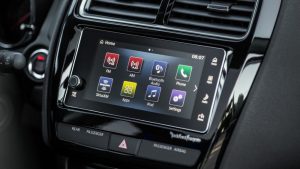
A top-of-the-line ES trim with the larger 2.4 liter engine, continuously variable (CVT) automatic and all-wheel-drive stickers for $25,595.
WHAT’S NEW
2018 is only the Outlander Sport’s second year in production but Mitsubishi has made a number of significant changes for the new model year. These include a standard 7 -inch LCD touchscreen in the base ES trim – and all trims except the base ES trim now come standard with Apple CarPlay and Android Auto.
The front and rear clips have been restyled, too.
Available manual transmission.
Good balance of passenger space in both rows and cargo room behind its rows.
Best warranty coverage.
WHAT’S NOT SO GOOD
Manual only available in base ES trim – and only with the smaller 2.0 engine and front-wheel-drive.
Optional seat heaters don’t get very hot.
Will probably depreciate faster than rivals.
Crossovers are like croissants – they are all pretty much shaped the same.
But the Outlander Sport is different in function.
First of all, you can still get this one with a five-speed manual transmission – which is almost like finding a living dinosaur in a remote Brazilian jungle.
Rivals models like the Chevy Trax, Honda HR-V, Mazda CX-3 and pretty much everything else in the Outlander’s orbit (with the exception of the Subaru Crosstrek) come only with automatics.
The main reason for that is the pressure all car companies are under to maximize fuel economy in order to comply with government fuel economy mandates. Automatics help a given car achieve a slight (usually, 2-3 MPG) advantage on the government’s fuel economy tests because they can be programmed to automatically shift in a way that maximizes the MPGs. A human-controlled manual is too variable in its shifting – and that makes it a problem as far as posting the best-case score on the government’s tests.
As far as fun is another matter. 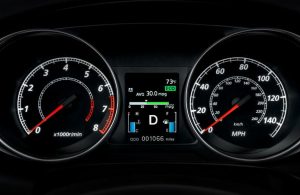
Second, the Outlander’s engines – there are two of them – aren’t turbocharged. This bucks the trend in this class of offering just one engine – and that engine often fitted with a turbocharger to make up for its small size.
This has its pros – and its cons.
A turbo boosts low end torque output as well as makes up for the horsepower deficit of small size. But, adding a turbo (and turbo peripherals) adds parts and pressure (boost) and increases the odds of something breaking, eventually.
No worries here, because there is no turbo – with either of the Outlander’s available engines.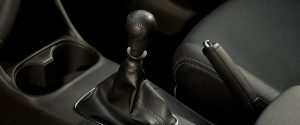
The standard 2.0 liter engine makes 148 horsepower and 145 ft.-lbs. of torque; the optional 2.4 liter engine makes 168 horsepower and 167 ft.-lbs of torque.
Both engines are very competitive with rivals engines in terms of both horsepower and torque. For example, the Chevy Trax’s standard (and only available) 1.4 liter turbocharged engine makes 138 hp and 148 ft.-lbs. of torque – about the same as the Mitsu’s standard 2.0 liter engine and less (of both) than its optional engine.
The Mazda CX-3 and Honda HR-V max out at 148 hp and 141 hp, respectively.
Unfortunately, the Outlander Sport’s manual transmission is only available with the base 2.0 liter engine, only in the base ES trim . . . and only with front-wheel-drive. If you want the additional power of the optional 2.4 liter engine, more stuff – or the optional all-wheel-drive system – you have to accept the continuously variable (CVT) automatic.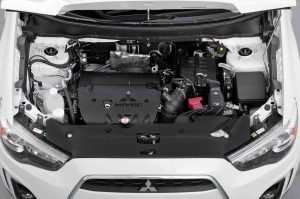
Either way, though, both performance and mileage are good vs. one-engine-only (and automatic-only) rivals:
With the 2.0 liter engine and the five-speed manual, the Outlander can get to 60 in about 8.5 seconds; with the optional 2.4 liter engine and the CVT automatic, 7.9 seconds. Both times are good times for the class.
The Chevy Trax and Honda HR-V need 9.3-9.5 seconds. The Subaru Crosstrek is also a member of the Nine Second Club.
The Mazda CX-3 can get to 60 in about the same time with its standard (and only) as the Outlander with its optional engine but the CX has a major deficit vs. the Mitsu in another category (more on this below).
Mileage is 23 city, 30 highway with the 2.0 engine and CVT – which gives a slight fuel economy advantage vs. the manual-equipped version (23 city, 29 highway). Interestingly, the larger 2.4 liter engine delivers the same mileage – 23 city, 29 highway – as the less powerful 2.0 liter engine, even with the optional AWD system.
Speaking of that . . .
The badges on AWD-equipped versions of the Outlander read 4WD.
All four wheels are driven – in both cases – but in AWD systems like the Outlander’s, it’s mostly the front wheels which drive the car, with some of the engine’s power occasionally and automatically kicked back to the rear wheels when the front wheels break traction.
Truck-type 4WD systems usually send all the engine’s power to the rear wheels only – unless the 4WD is engaged by the driver.
AWD systems can also route power to individual wheels rather than pairs of wheels during high-speed cornering – which gives AWD-equipped vehicles a handling advantage vs. FWD and RWD vehicles.
And 4WD-equipped vehicles.
Truck-type 4WD doesn’t have the ability to route power to individual wheels and truck-type 4WD isn’t supposed to be engaged at all on dry, paved roads. Or even on wet paved roads for that matter. 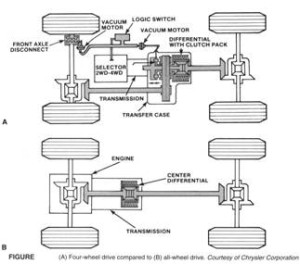
This is why it is usually part-time 4WD and driver-selectable.
There is also usually a two-speed transfer case and 4WD Low range gearing – to increase mechanical leverage at low speeds.
Most AWD system – including the Outlander’s – do not have this feature. But they do provide additional traction all the time – dry, wet or not. And they are specifically designed to improve high-speed cornering grip on dry and wet pavement.
4WD is designed to provide a traction advantage on uneven terrain (i.e., off-road) and in heavy snow and mud. It is not designed to improve high-speed handling grip.
AWD is therefore arguably the superior system for most on-road driving, which is the type of driving most people buy crossovers for.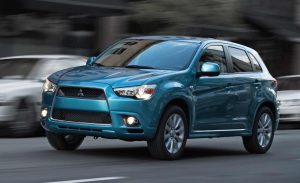
But 4WD sounds more rugged and that’s why Mitsubishi and several others market their AWD systems as 4WD.
ON THE ROAD
Displacement shouldn’t be replaced.
Note that the Outlander is quicker with its standard engine than its turbocharged (and smaller-engined) rivals and gets about the same or even better mileage in real-world driving – as opposed to government fuel-efficiency testing.
Precisely because its standard engine is bigger – and not turbocharged.
Turbocharged vehicles deliver the MPG goods on the government’s test loop – on paper – because they aren’t under boost; the testing assumes people drive like Clovers – accelerating in politically correct slow-motion, never stomping on the gas pedal to pass or merge or pull away from Clovers.
But what if you do accelerate in non-Clover fashion? Then the boost comes on – and gas mileage goes down. That little engine is working hard to deliver the acceleration a larger and not-turbo’d engine could deliver with less sweat – and using less gas.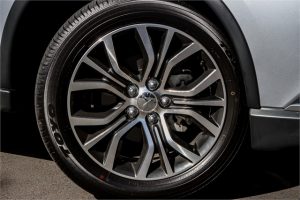
Try it yourself and see. One of the greatest cons going these days is the one that gulls people into believing that a tiny, turbocharged engine will “save gas” vs. a larger one.
Usually, it won’t.
Not in the real world – as distinct from government world.
Being able to shift for yourself is also fun – a quality lacking among crossovers. And it gives you more control over the vehicle.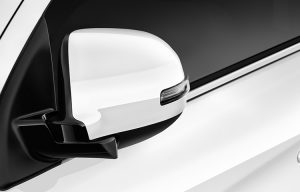
But the Mistu’s optional CVT is an unobjectionable box; it mimics the operating characteristics of a conventional six-speed automatic. Even though it does not have fixed gears it seems to shift up – and down – as if it did. Buyers understandably prefer this to the turbine-like continuous (and shift-less) acceleration that used to characterize CVT automatics but which has been mostly programmed out of them because of the turbine-like noise which came along for the ride.
Either way, you’ve got more power – and better performance – than in rivals. With a simpler, probably more long-term-reliable drivetrain.
The Outlander’s styling is conservatively crossover – not nearly as sexy as the Mazda CX-3.
But sexy is often less practical.
Though the two are about the same length – 171.9 inches for the Mitsubishi vs. 168.3 for the Mazda – the Mitsu’s interior space is allocated more sensibly. It has 41.6 inches of first row legroom, 36.3 inches of second row legroom and 21.7 cubic feet of cargo capacity behind the second row. The Mazda’s got 41.7 inches of legroom up front, 35 inches of backseat legroom – and only 12.4 cubic feet of cargo space behind the second row, barely more than half the space behind the Outlander’s second row.
The Chevy Trax also has less room behind its second row (18.7 cubic feet) and a bit less total cargo room (48.4 cubic feet vs. 49.5 for the Outlander) and a tighter back seat for passengers (35.7 inches of legroom).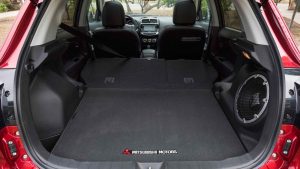
The Honda HR-V is the most sensible of the bunch – in terms of space efficiency. It has 41.2 inches of first-row legroom, a stupendous 39.3 inches of second row legroom and class-best 23.2 cubic feet of cargo space behind its second row – with 55.9 cubic feet of space available if you lay the second row flat.
But the Honda comes up short in one other key dimensional category – clearance.
The Outlander rides a lot higher than all of its rivals; it has 2.3 inches more ground clearance than the Mazda CX-3 and Chevy Trax (6.2 inches, the both of them) and almost two inches more than the Honda HR-V (6.7 inches).
That extra margin matters when it snows. And when it rains.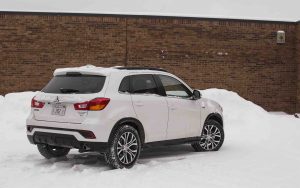
During the week I had the Outlander to test drive, it poured almost non-stop. In addition to being better-able to ford standing water on paved roads, the Outlander tackled the washed-out, badly rutted gravel road I have to drive to get home without me having to crawl home to avoid ripping things off the Mitsu’s undersides.
The Subaru Crosstrek is the only same-sized crossover (175.8 inches long) with more ground clearance (8.7 inches). It is also one of the few remaining crossovers that you can buy with a manual transmission – and with AWD.
But the Soobie’s base price is significantly higher ($21,795) and it’s doubtful you’ll be able to haggle that down as far as you probably will be able to haggle down the Outlander’s MSRP.
The Outlander offers some other things the others don’t – including a panorama sunroof with LED surround mood lighting.
There is also a pull-up emergency brake instead of a push-button parking brake. Just as turbos are becoming hard to avoid, manual emergency brake levers are becoming hard to find. The push-button parking brake is sold as a convenience but it’s actually a cost-cutting measure.
And a cost-adding measure.
It costs less to install the electrical-activated/push-button parking brake system at the factory, reducing manufacturing costs. But if the electronics (and actuators) fail once the vehicle is yours (and out of warranty) the cost to fix it will be higher.
The push-button parking brake does free up space on the center console – but the pull-up emergency brake gives you more control in the event the main braking system ever fails and also in certain situations where manually applying braking pressure to just the rear wheels is helpful and . . . fun.
You know what I mean!
THE BOTTOM LINE
Of course, everything has its price – as well as its value.
The Outlander will almost certainly cost you less to buy than other models in this class – but when it comes time to sell it (or trade it in) you will probably also get less for it than you would for more blue chip crossovers such as the HR-V and CX-3 (and definitely the very popular Subaru Crosstrek).
At least, until Mitsubishi rebuilds its brand. 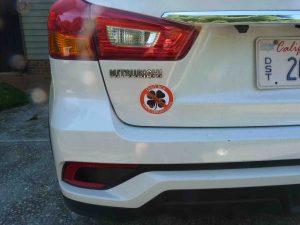
But this matters less the longer you keep any of these. If you don’t sell or trade-in a vehicle before it is eight or nine years old, depreciation rates level out.
After ten, they plateau.
If you are looking to buy with the long-term in mind, there is also much to be said for a simpler and so less repair-prone vehicle like the Outlander.
And there are precious few of those left on the market – at any price.
. . .
Got a question about cars – or anything else? Click on the “ask Eric” link and send ’em in!
If you like what you’ve found here, please consider supporting EPautos.
We depend on you to keep the wheels turning!
Our donate button is here.
If you prefer not to use PayPal, our mailing address is:
EPautos
721 Hummingbird Lane SE
Copper Hill, VA 24079
PS: EPautos magnets are free to those who send in $20 or more. My latest eBook is also available for your favorite price – free! Click here. If you find it useful, consider contributing a couple of bucks! 




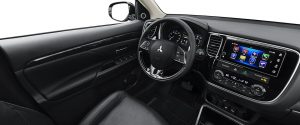
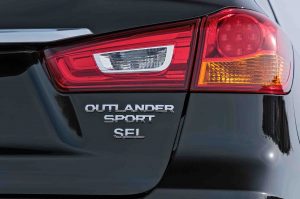
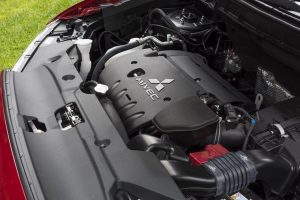










I test drove an 2017 Outlander Sport GT when they first came out and almost bought it for my wife. She didn’t like that it looked too cute and that it had a high dash. I thought it was a great drivers car (really pushed the car around a mountain road on the test drive). If it had the 2.0 turbo from the Lancer Ralliart it would have been a sure sale. We ended up getting a CPO 2014 XC70 T6 AWD instead (the CVT and manual Crosstreks we looked at were waaaaay to slow).
Earlier this year we had a 2018 Outlander Sport ES AWD with the 2 liter as a rental car on a 1200 mile road trip. It was a great car other than lacking power. The difference between the 2.0 and 2.4 is night and day. The 2.4 felt faster going up a hill at 5k feet in Colorado than the 2.0 was on flat ground near sea level in Texas.
We hit a really bad snow storm on the way home which the Outlander Sport handled like a champ. The AWD system was very capable, nearly Volvo Haldex system good. If Mitsubishi ever offers the Eclipse Cross with the Ralliart or Evo engine, I’d definitely consider buying one. There is so much to love about Mitsubishi SUVs. I just think they are a bit under-engined right now. In 2018 there is really no excuse for a compact or midsize SUV from any manufacturer to have a 0-60 time higher than 7 seconds flat.
Mitsu fell off the face of the earth here in Texas and you could only get their work vans. I glanced at these a few weeks ago and they look like an affordable alternative to the US crossovers and are stylish to say the least. Not enough cargo room my fams’ needs but would be nice none the less.
Hi Brazos,
The fact that it offers a manual (and doesn’t come with a turbo) makes me like the thing!
If you don’t belive me, here is a modern example of old-tech saving some people’s asses. It is in Spanish, but you can’t still tell even before it happens, a semi has lost brakes and is coming in hot! The cammer also had a CB, and was watching for it to catch up to them, and thus get the hell out of harm’s way. Some others weren’t so lucky!
https://www.youtube.com/watch?v=qgRPfcoiaus
Hey Eric!
Ya know what’s really missing in new cars? Real HUMAN interaction, the kind that prevented wrecks and traffic jams. I’m specifically referring to CB Radio. I know the stereotype is “cowboy truckers”, but it really does work, and in place besides the US as well. in the 1970’s My parents had one in every car PLUS a home base transmitter station the size of a microwave oven! I can tell you it saved our bacon and kept us out of a lot of bad traffic and “other situations” far better than anything else can even today. I know 8-Southman can testify to that as well. I remember GM offering it as a radio package from 1975 to about 1985, and the Honda Goldwing and Silverwing could be ordered with factory Clarion CB radios, too! My parents drove our 1970 VW bus like a Semi, and got away with it, too (although they blew the motor 3 times in 9 years, lol!) Still, it was fun to talk to them (and the truckers) at home while they were on the road and in range of the base station! Who needed cell phones when anyone of us could call for help on the CB? The car units started out as just 3-channel, but the base station had everything including police, fire, and rescue squad! We had a scanner at home, too. The 70’s may have been a little crazy, but shit worked better then, so did people. Today’s high-tech crap just isolates everyone and heightens the partanoia. I’m pissed because I wanted my parents’ life when I got to be an adult their age, not this crap we have now!
The 2000 Honda CR-V that I had for a while was equipped with their part-time 4WD (front-biased) system and 2.0 liter four-cylinder, with a manual transmission. It’s light weight meant that it was pretty zippy to drive (considering it was a CUV), and I wouldn’t mind having the same experience today. But with the heavier vehicles these days, something like the Outlander Sport would need the bigger motor. And the manual transmission, and the Android Auto, etc. etc. I think they’re missing part of the market by not offering it configured like that.